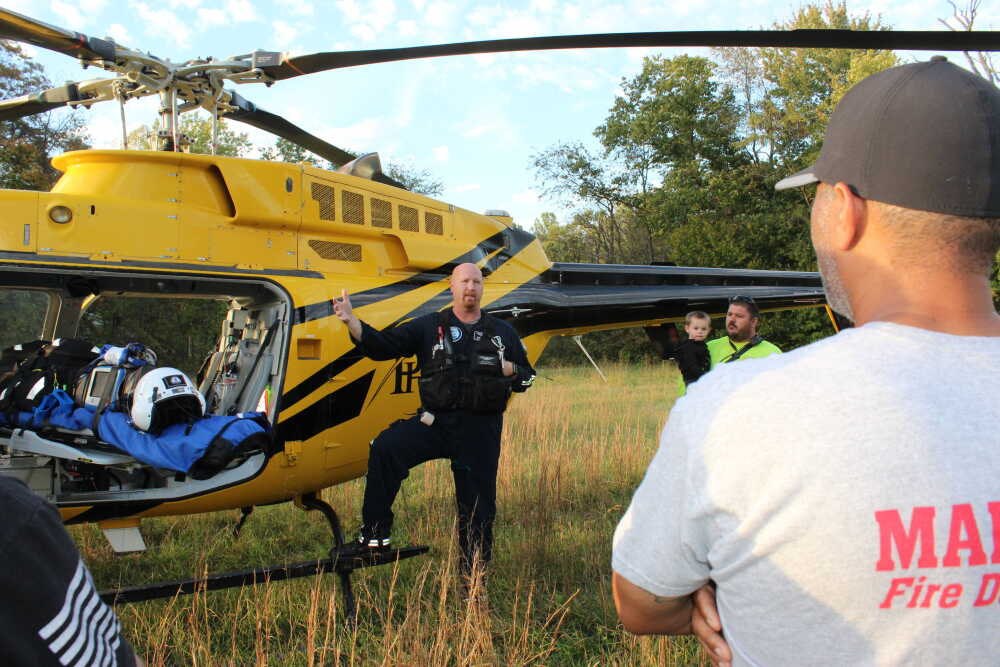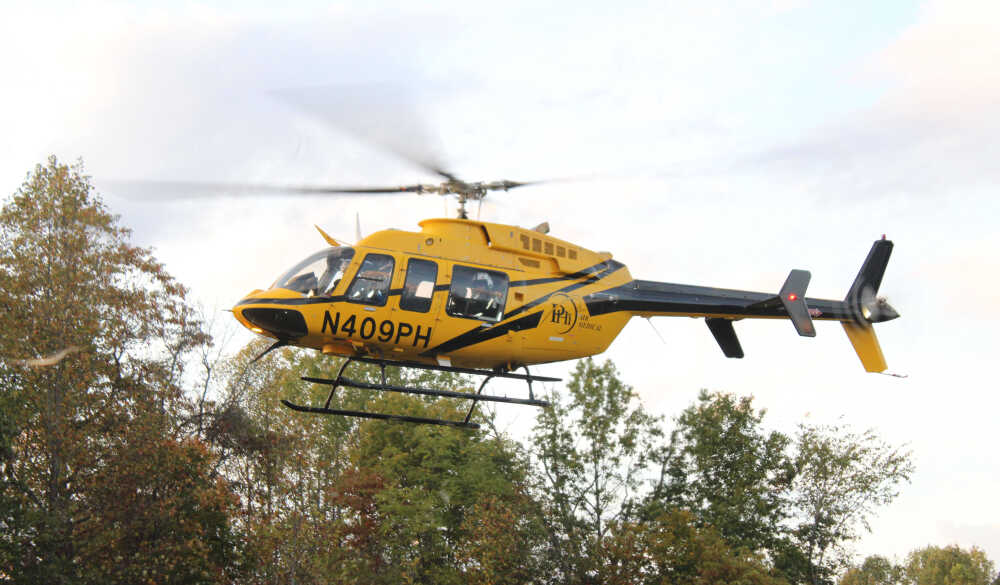Madison volunteers get training in landing zones

A universal rule with a helicopter is that you should never go around its backside. Anyone approaching and leaving a helicopter should do so from a 45-degree angle in the front so the pilot can see them.
“It’s just simple things like that which you would kind of assume everyone knows, but they really don’t,” St.Vincent StatFlight Flight Paramedic Kerri Keyt told the Banner Graphic on Tuesday.
With a group of new firefighters having recently joined its ranks, the Madison Township Volunteer Fire Department practiced these ground rules and how to set up a landing zone (LZ) with StatFlight Wednesday evening. The flight crew included Flight Paramedic and Greencastle Air Medical Base Supervisor Jeremy Quire, Flight Nurse Riki Harlos, Pilot Kevin Jones and Flight Paramedic In-Training Matthew Spicer.
Once StatFlight is requested, radio contact is set up with emergency personnel on the ground. A general location or coordinates, as well as any hazards, are then given to the flight crew. After StatFlight advises of an estimated arrival time, the ground personnel will give them the weight and status of the patient.
A 100-by-100-foot zone will be established, optimally on solid ground like pavement. An LZ manager will survey the area to ensure that non-medical personnel or animals cannot get too close. StatFlight will take off once the patient is loaded and the LZ is clear.

With major trauma, the goal is being within the “golden hour.” This is the time to get a patient from the scene to a hospital for treatment.
To transport a patient by ambulance from Putnam County to Indianapolis would take this long. With the medical helicopter service, they can get to a Level I trauma center there in about 20 minutes. Meanwhile, Putnam County Hospital is only considered a critical access hospital.
Apart from hazards including power lines and trees, potential traffic is the biggest safety variable. With a parking lot, all entrances and exits need to be blocked. For an operation taking place on a highway, both directions should be shut down to minimize people interfering with the scene.
“It’s crazy to see some of the things that have happened because people want to watch the helicopter,” Keyt said. “We’ll land at a scene and there’ll be 50 cellphones out, which is fine, take pictures of the helicopter. But they also need to be respectful of the fact that there is a patient still.”
Keyt noted that there are 20 pre-designated LZ areas in Putnam County, including Putnam County Regional Airport, schools and fire departments which have a helipad.
“We’re blessed to be in a prime location here,” she said. “While we don’t want to meet people when they get hurt, the fact that this service is available to the people in the rural community is literally lifesaving.”
Keyt said StatFlight tries to hold at least one LZ training a year with each fire department in the county. She added that the Greencastle base will average around 400 flights a year, with about half being scene flights.
